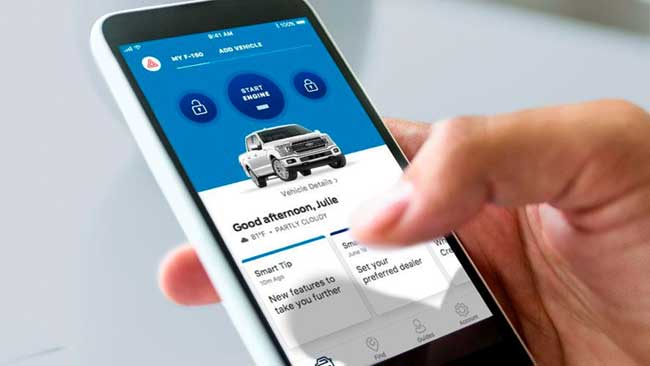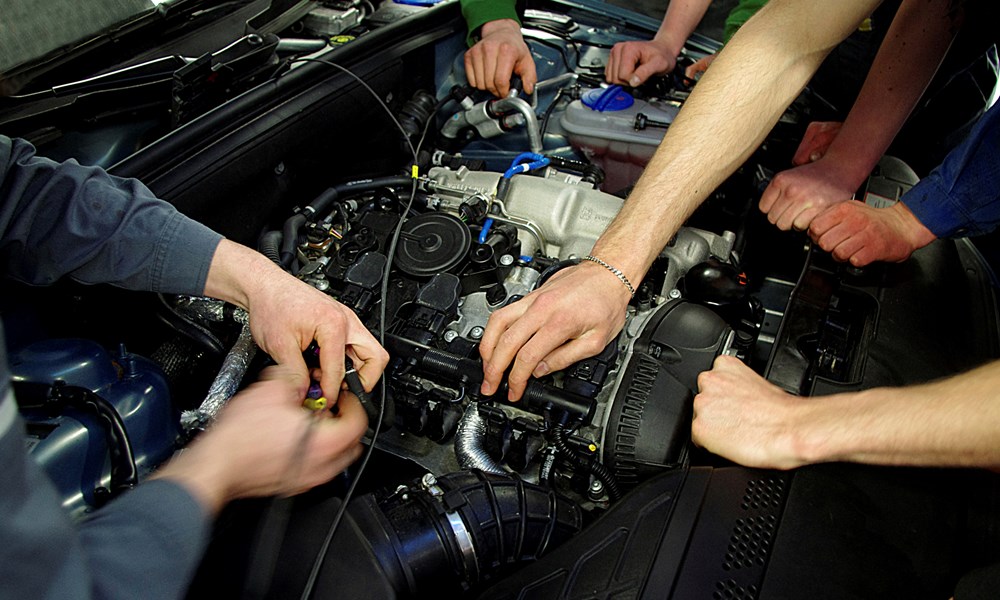In today’s tech-driven world, diagnosing car problems no longer requires a trip to the mechanic every time your check engine light comes on. With automotive diagnostic apps, you can quickly identify issues, understand error codes, and even receive repair recommendations—all from your smartphone. These apps are revolutionizing car maintenance, offering convenience, cost savings, and real-time insights.
The Rise of Automotive Diagnostic Apps
Car diagnostic apps have transformed how we approach vehicle maintenance. Previously, identifying car issues required specialized tools or professional assistance. However, advancements in smartphone technology and the widespread availability of On-Board Diagnostics (OBD-II) systems have bridged the gap between car owners and mechanics. Diagnostic apps not only save money but also empower drivers to understand and manage their car’s health without expert intervention. Whether you’re a casual driver or an automotive enthusiast, these tools provide valuable support.
Key Features of Car Diagnostic Apps
When choosing a diagnostic app, it’s essential to evaluate its features to ensure it meets your needs.
- OBD-II Compatibility: Most apps require a Bluetooth or Wi-Fi adapter to connect to your car’s OBD-II port, which retrieves diagnostic data.
- User-Friendly Interface: Look for apps with intuitive designs that make data easy to interpret.
- Vehicle-Specific Functionality: Some apps cater to specific car brands, while others offer universal compatibility.
- Comprehensive Features:
- Error Code Reading: Decode Diagnostic Trouble Codes (DTCs) and get clear explanations of issues.
- Maintenance Reminders: Stay updated on oil changes, tire rotations, and other routine tasks.
- Battery and Engine Health: Monitor essential systems for preventive care.
- Sensor Integration: Access real-time data like speed, fuel efficiency, and temperature.
- Updates and Support: Apps with regular updates ensure compatibility with newer vehicles and address software bugs.
How Car Diagnostic Apps Work
Car diagnostic apps rely on OBD-II systems, which have been standard in vehicles since 1996. These systems monitor a car’s performance and store data related to emissions, engine health, and other functions.
- Understanding OBD-II Systems: The OBD-II port, typically located under the dashboard, serves as the gateway for diagnostic information.
- Connection Methods:
- Bluetooth Adapters: Connect wirelessly to your smartphone for easy access.
- Wi-Fi Adapters: Offer a stable connection and work well with most apps.
- Direct Smartphone Integrations: Some newer vehicles allow direct app connections without additional hardware.
- Data Interpretation:
- Apps translate error codes into actionable insights, helping users understand issues and potential fixes.
Top Apps for Diagnosing Car Problems
Here are some of the best car diagnostic apps currently available, each offering unique features:
Torque Pro:
-
- Features: Live data tracking, customizable dashboards, and error code analysis.
- Best For: Enthusiasts who want detailed performance metrics.
- Pricing: One-time fee.
FIXD:
-
- Features: Simple explanations of error codes, maintenance reminders, and user-friendly interface.
- Best For: Everyday drivers seeking straightforward diagnostics.
- Pricing: Free app with optional hardware purchase.
BlueDriver:
-
- Features: Advanced diagnostics, repair suggestions, and vehicle-specific insights.
- Best For: Professionals and advanced users.
- Pricing: App is free, but requires BlueDriver sensor.
Car Scanner ELM OBD2:
-
- Features: Comprehensive diagnostics, real-time data graphs, and customization options.
- Best For: Tech-savvy users who want in-depth data.
- Pricing: Free with premium options.
Carly:
-
- Features: Deep diagnostics, coding options, and compatibility with premium European cars.
- Best For: Owners of high-end vehicles.
- Pricing: Subscription-based.
DashCommand:
-
- Features: Focus on performance metrics, including horsepower and torque.
- Best For: Performance enthusiasts.
- Pricing: One-time fee.

Benefits of Using Diagnostic Apps
- Cost Savings: Diagnostic apps eliminate the need for professional scans, which can cost $100 or more.
- Preventive Maintenance: Early detection of issues helps avoid costly repairs down the line.
- Convenience: Diagnose problems anytime, anywhere, with just a smartphone and adapter.
- Empowerment: Understanding your car’s health reduces reliance on mechanics for basic troubleshooting.
Factors to Consider When Choosing a Car Diagnostic App
To select the right app, evaluate the following:
- Vehicle Compatibility: Ensure the app supports your car’s make and model.
- Hardware Requirements: Most apps require a compatible OBD-II adapter.
- Data Accuracy: Reliable apps provide precise diagnostics and actionable insights.
- User Reviews: Check feedback to gauge the app’s performance and ease of use.
- Pricing: Compare free and paid options to find one that fits your budget.
Limitations of Diagnostic Apps
While these apps are powerful, they have some limitations:
- Accuracy: Not all apps provide pinpoint diagnostics, especially for complex issues.
- Hardware Dependency: The quality of the OBD-II adapter significantly impacts performance.
- Complex Problems: Certain issues still require professional expertise.
- Learning Curve: Some apps require familiarity with technical terms and processes.
How to Get the Most Out of a Diagnostic App
Maximize the app’s utility with these tips:
- Use a high-quality OBD-II adapter for reliable data.
- Regularly update the app to access the latest features.
- Cross-check app diagnostics with online resources or a trusted mechanic.
- Follow maintenance reminders to keep your vehicle in top shape.
Comparison: Diagnostic Apps vs. Traditional Tools
| Feature | Diagnostic Apps | Traditional Tools |
| Cost | Affordable or free | Expensive upfront cost |
| Accessibility | Smartphone-based | Requires dedicated devices |
| Accuracy | Suitable for basic issues | Higher precision for professionals |
| Usability | Easy for all users | May need specialized training |
The Future of Car Diagnostic Apps
The future of automotive diagnostics is bright, with advancements in:
- AI Integration: Predictive maintenance and smarter repair recommendations.
- Electric Vehicle Compatibility: Apps tailored for EVs and hybrids.
- Smart Car Ecosystems: Seamless integration with connected vehicles and IoT devices.
Conclusion
Car diagnostic apps are invaluable tools for understanding and maintaining your vehicle. From decoding error codes to offering repair suggestions, they empower drivers to take control of car care. While they don’t replace professional mechanics for complex problems, these apps provide a convenient, cost-effective solution for everyday diagnostics. Explore the top apps mentioned and take the first step toward smarter, more efficient car maintenance.

 Why Mobile Tyre Replacement is the Future of Car Maintenance
Why Mobile Tyre Replacement is the Future of Car Maintenance  The Real Cost of Anime Car Wraps: What You Need to Know Before Going Full Itasha
The Real Cost of Anime Car Wraps: What You Need to Know Before Going Full Itasha  The Importance of Quiet Generators for Peaceful Sleep: Featuring the Jackery Solar Generator 2000 Plus
The Importance of Quiet Generators for Peaceful Sleep: Featuring the Jackery Solar Generator 2000 Plus  Why WEX Motorpass Is the Smart Choice for Business Fuel Management
Why WEX Motorpass Is the Smart Choice for Business Fuel Management  Top Choice for 4WD and Overlanding Rentals in Bozeman
Top Choice for 4WD and Overlanding Rentals in Bozeman  How Car Window Tinting Enhances Privacy and Protection on the Road
How Car Window Tinting Enhances Privacy and Protection on the Road  Certified Preowned Cars: Are They Worth It?
Certified Preowned Cars: Are They Worth It?  Apps That Help Diagnose Car Problems Like a Mechanic
Apps That Help Diagnose Car Problems Like a Mechanic  How to Track Fuel Efficiency and Expenses Using Smart Apps
How to Track Fuel Efficiency and Expenses Using Smart Apps 